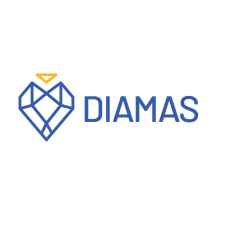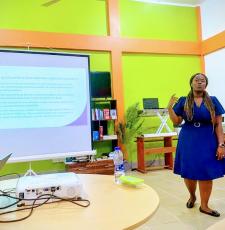
As more and more publishers introduce options for publishing in open access, it can be difficult for researchers to decide where to publish and what they should expect to pay. This blog provides an overview of publishing options and article processing charges (APCs) offered by EIFL’s publishing partners.
Publishing an article in a subscription journal is free for the publishing author. The cost of publishing, including peer-review, editing and the general cost of running a journal, is covered by the subscription fee the library pays the publisher. When publishing an article in open access on the other hand, the article becomes freely available to anyone; on the downside, either the author or their affiliated institution is often charged an article processing charge (APC) to cover the cost of publication.
Publishers usually indicate a set APC. However, a recent study shows that the final APC paid is usually lower than the stated charge. The final charge depends on the amount of work needed (article processing) before publication, for example, if there are complex graphs or appendices, and the language needs a lot of editing, the APC will be higher - but generally not higher than the stated APC.
With the recent renewal of EIFL’s agreement with Taylor & Francis that guarantees no or discounted APCs for authors publishing in some of their open access journals, we thought it was time to explain in detail how it all works and to give an overview of the options offered by EIFL’s publishing partners.
THREE TYPES OF JOURNALS
Researchers can publish their articles in three types of journals: subscription journals, fully open access journals, and hybrid journals.
SUBSCRIPTION JOURNALS
When publishing in a subscription journal, there is no cost to authors whose articles have been accepted for publication. That is, they do not need to pay APCs.
However, the library needs to pay a subscription fee: subscription journals can only be accessed by researchers when the institutions they are affiliated with are paying for a subscription. For many libraries and consortia in developing and transition economy countries, EIFL has negotiated free or discounted access to subscription journals. However, the subscription costs can still be a barrier.
Because publishers are adopting open access policies for more of their journals, there are fewer subscription-only journals. For example, out of a total of 1,500 Wiley journals, only 168 are classified as subscription-only; SAGE only has 27 subscription-only journals out of a total of over 900 journals.
FULLY OPEN ACCESS JOURNALS
A second option is for authors to publish in a fully open access journal, also called gold open access. This is a journal which contains only open access articles. According to a recent study about 65% of fully OA journals do not charge for publishing an article, for example the Open Science journal published by Royal Society Publishing currently doesn’t charge for article processing. However about 35% of open access journals require authors to pay an APC.
The APC does not have to come out of the researcher's pocket, but may be funded by research grants or funding organisations. Take a look at this page for a list of research funders by country. For example, the European Commission-funded project, (openaire.eu/postgrantoapilot) OpenAIRE (in which EIFL is a partner) offers APC grants to researchers who have completed FP7 projects when they publish results in a fully open access journal.
Some publishers waive APCs or offer discounts for researchers in developing countries who publish in a fully open access journal: Cambridge University Press, Oxford University Press, SAGE, Taylor and Francis and Wiley all offer discounts and waivers on APCs - see below for details.
The advantage of open access journals is that they can be freely accessed by anyone - anyone can find open access articles on the internet and download them from the journal website or the publisher’s website. The Directory of Open Access Journals also lists fully open access journals and provides a platform to search for articles.
HYBRID JOURNALS
A third option is to publish in a hybrid journal. Hybrid journals contain both open access and subscription articles. This means that the author can either choose to pay an APC so that the article is published in open access, or not to pay, and have the article be placed behind the pay-wall, like a subscription journal.
Hybrid journals are included in institutional IP access together with subscription journals. Hybrid journals are not included in the Directory of Open Access Journals, making them less discoverable than fully open access journals. Some funders will only cover the cost of APCs if an article is published in a fully open access journal, and do not support articles published in a hybrid journal.
Journal ranking is achieved over time and therefore works in favour of journals that have been published for longer. Over the last few years, publishers have transitioned their existing subscription-only journals to hybrid journals, which have kept the same rankings. Fully open access journals on the other hand tend to be newly-established, usually starting off with lower ranking. Higher rankings for hybrid journals mean that processing charges for publishing an article in open access in a hybrid journal can be more expensive than publishing it in a fully open access journal.
Some publishers do not offer waivers and discounts for researchers from developing countries who publish in hybrid journals. An exception is Oxford University Press (OUP), which does offer a waiver and discount on APCs for authors from developing countries who publish in OUP hybrid journals.
We also recommend that when choosing a journal, researchers consider whether it is the right journal for their work. Use Think. Check. Submit.
Overview of APC charges from EIFL publishing partneRS
Cambridge University Press:
- 111 subscription only journals
- 33 fully open access journals
- 236 hybrid journals
- APC for open access and hybrid journals: varies from journal to journal, depending on the subject. The standard APC is $2,835. The following three fully open access journals do not charge an APC: the Journal of Classics Teaching, the British Actuarial Journal and AJIL Unbound. Click here to download the list of journals and their APC charges (see column H).
- Waivers: authors from low- and middle-income countries will have APC costs waived or reduced when publishing in a fully open access journal.
Duke University Press:
- 1 subscription only journal: the Duke Mathematical Journal
- 1 fully open access journal: Environmental Humanities
- 42 hybrid journals
- APC for open access and hybrid journals: $1,000 per article for scholarly, peer-reviewed articles and $300 for non-peer reviewed content.
- Waivers: none.
Edward Elgar:
- 0 subscription only journals
- 0 fully open access journals
- 7 hybrid journals
- APC for hybrid journals: $1,300 per article
- Waivers: 50% discount to researchers from EIFL partner countries.
Emerald:
- 0 subscription only journals
- 1 fully open access journal
- 306 hybrid journals
- APC for hybrid journals: varies from journal from journal from $2,000 to $2,800. Check the Emerald journal APC price list here.
- Waivers: none.
Intellect:
- 0 subscription only journals
- 0 fully open access journals
- 99 hybrid journals
- APC for hybrid journals: $1,300 per article
- Waivers: Intellect has set up the Intellect Author Fund to encourage early career scholars to publish in open access. The fund is made up of royalty contributions from editors and authors. You can find more information here.
IOP Publishing:
- 30 subscription only journals
- 7 fully open access journals
- 57 hybrid journals
- APC:
- For open access journals, the APC varies from journal to journal, ranging from $1,450 to $2,080. Some of the journals do not seem to charge an APC. You can find a list of journals here under the heading ‘Open Access publishing options - Which journals are completely gold open access?’. The individual journal page will have information about the APC.
- For hybrid journals, the APC is set at $2,700. You can find a list on this page under ‘Open Access publishing options’.
- Waivers: none.
Oxford University Press:
- 0 subscription only journals
- 42 fully open access journals
- 250 hybrid journals
- APC: varies from journal to journal, between $1,300-$3,200. To see the APC for each journal, click on the journal title on this page, then select ‘publish’ then ‘Author Guidelines’ to see more details.
- Waivers: Authors from Angola, Cambodia, Congo, Ethiopia, Ghana, Kenya, Kyrgyzstan, Laos, Lesotho, Malawi, Myanmar, Nepal, Senegal, Tanzania, Uganda, Uzbekistan, or Zambia qualify for an APC waiver. Authors from Armenia, Bosnia and Herzegovina, Fiji, Georgia, Kosovo, Macedonia, Maldives, Moldova, Namibia, Palestine, Sudan, Ukraine and Zimbabwe qualify for a 50% discount. This applies to both fully open access and hybrid journals.
Royal Society Publishing:
- 0 subscription only journals
- 2 fully open access journals
- 7 hybrid journals
- APC:
- The fully open access journal Open Science, currently does not charge an APC. The second fully open access journal Open Biology charges an APC of $1,680.
- For all hybrid journals the APC is $2,380 per article.
- Waivers: 25% discount on APCs for members of the Open Access Membership Programme.
SAGE:
- 27 subscription-only journals
- 95 fully open access journals
- 790 hybrid journals
- APC:
- For fully open access journals the APC varies between $100 and $2,000 per article, depending on the journal.
- For hybrid journals the standard APC is $3,000 however there are 18 journals with a lower APC of between $750 and $1,500. You can review the list here.
- Waivers: authors from developing countries can apply for an APC discount or waiver once their article has been accepted for publication. More information on this can be found here. The waiver applies only to open access journals.
Taylor & Francis:
- 122 subscription only journals
- 160 fully open access journals
- 2,290 hybrid journals
- APC:
- For fully open access journals this varies from journal to journal. You can check the APC if you select a journal on this page, then click on ‘instructions for authors’ on the left hand side panel, and then select ‘Article publishing charge’ under the ‘Contents’ list.
- The standard APC for hybrid journals is $2,950, but for a few journals it is lower (minimum $750). You can download a list of hybrid journals and their APCs here.
- Waiver: for 81 of the fully open access journals, APCs are waived for researchers in Cambodia, Ethiopia, Ghana, Kenya, Kyrgyzstan, Laos, Lesotho, Malawi, Myanmar, Namibia, Nepal, Senegal, Tanzania, Uganda, Uzbekistan, Zambia, Zimbabwe. There is a 50% discount on APCs for researchers in Armenia, Azerbaijan, Belarus, Bosnia and Herzegovina, Botswana, Congo, Côte d'Ivoire, Estonia, Fiji, Georgia, Kosovo, Latvia, Lithuania, Macedonia, Maldives, Moldova, Palestine, Serbia, Sudan, Thailand, Ukraine. Read more here.
Wiley:
- 168 subscription only journals
- 50 fully open access journals
- 1,325 hybrid journals
- APC: varies from $1,000 to $5,000, depending on article. An overview of journals and their APCs is provided here.
- Waivers: for all Wiley fully open access journals, automatic APC waivers and discounts will be given to authors from countries on the Waivers and Discounts List, which includes most EIFL countries. Check your eligibility here.
SHARE / PRINT








